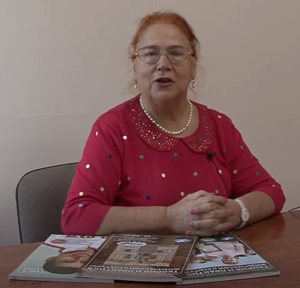Prospects of scientific and educational-methodical development of the "Wushu Sanda" system in the light of content analysis of specialized publications
ˑ:
Master Hu Xiaoxuan1
Dr. Hab., PhD, Professor A.A. Peredelskiy2
1Russian University of Sport (SCOLIPE), Moscow
2Plekhanov Russian University of Economics, Moscow
Abstract
Objective of the study was to determine the main directions of promising scientific and educational development on this system of martial arts in modern Russia on the basis of a structural and content analysis of thematic sources in wushu-Sanda.
Methods and structure of the study. The main scientific and empirical method of structural and content analysis is the qualitative content analysis of documents. The general population accepted an array of scientific and educational publications on the topic of this study, contained in the electronic resource of the scientific library of the Russian University of Sports "GTSOLIFK". Four blocks of publications are accepted as units of analysis: doctoral and master's theses, master's theses, major publications, and small publications. Units of account are single or separate sources.
Results and conclusions. A number of sources are in the nature of popular or educational literature. The style of structuring and presentation of wushu publications in many cases differs from the traditional criteria and templates established in sports science. This difference manifests itself already at the level of the name of the robot, which greatly complicates their correct classification and grouping. Especially all of the above applies to the profile works of the last quarter of the 20th - the very beginning of the 21st century. By the middle of the first decade of the 21st century, the situation is gradually changing towards the transition to the usual sports science patterns and criteria for presenting and structuring the material, which indicates the growing process of sportization, that is, sports adaptation of martial arts and martial arts in Russia.
Keywords: "Wushu Sanda" system, directions of scientific and educational-methodical development, content analysis of specialized publications.
References
- Wang Lin. Tekhnologiya formirovaniya tekhniki udarov nogoy v ushu u nachinayushchikh sportsmenov [Technology for the formation of the technique of kicks in the ear in beginner athletes]. PhD diss. Russian State University of Physical Education. Moscow, 2007. 95 p.: ill.
- Wang H. Uprazhneniya ushu kak sredstvo razvitiya gibkosti [Wushu exercises as a means of developing flexibility]. Master dis. Ministry of Sports of the Russian Federation, Russian University of Sport (SCOLIPE). Moscow, 2011. 82 p.: ill.
- Gao M. Istoricheskiye aspekty razvitiya Taolu ka metoda boyevoy podgotovki v ushu [Historical aspects of the development of the Taolu ka method of combat training in Wushu] [Electronic resource]. Master's program "Higher Sports" achievements and training system. Athletes". Ministry of Sports of the Russian Federation, Russian University of Sport (SCOLIPE). Moscow, 2020.
- Gizyuk A., Podkovyrov V. Besedy o boyevom iskusstve [Conversations about martial art]. Moscow: Prometey publ., 1991. 160 p.
- Dolin A.A., Maslov A.A. Istoki U- SHU [The origins of Wu- Shu]. Moscow: [n.p.], 1990. 240 p.
- Ivlev M.P., Shestakov M.P., Xian Tei Yu Kitayskaya gimnastika ushu [Chinese wushu gymnastics]. Methodological development. RGAFK. Moscow, 1996. 55 p.: ill.
- Kalakauskene L.M. Ushu i tsigun kak zdorovyeformiruyushchiye tekhnologii v fizicheskom vospitaniia [Wushu and qigong as health- forming technologies in physical education]. Federal Agency for Physical Culture and Sports, Tchaikovsky State Institute of Physical Culture. Tchaikovsky: CHGIFK publ., 2007. 154 p.: ill.
- Karamov S.K. Primeneniye shesta v razlichnykh stilyakh ushu [The use of a pole in various styles of wushu]. Moscow: Fizkultura i sport publ., 2001. 232 p.: ill.
- Karamov S.K. Ushu [Wushu]. Book 1: Sanda Style. Moscow: Terra- sport: Olympiya press publ., 2004. 71 p.: ill.
- Karamov S.K. Ushu [Wushu]. Book 2: Tai Chi Style. Moscow: Terra- sport: Olympiya press pybl., 2004. 90 p.: ill.
- Kilivnik I.A. Individualno- psikhologicheskiye osobennosti formirovaniya «chuvstva mikrointervalov vremeni» u sportsmenok ushu sanshou (15-17) [Individual- psychological features of the formation of the "sense of microintervals of time" among wushu sanshou athletes (15-17)] [Electronic resource]. Master's diss. Ministry of Sports of the Russian Federation, Russian University of Sport (SCOLIPE). Moscow, 2015. 1 CD- ROM.
- Krasulin I.A. Ushu – put k pobede [Wushu – the path to victory]. Moscow: Znaniye publ., 1992. 64 p.: ill.
- Lin D. Boyevaya gimnastika ushu dlya zdorovya i samozashchity [Wushu combat gymnastics for health and self- defense]. Rostov- on- Don: Feniks publ.,; Krasnodar: Neoglori publ., 2008. 254 p.: ill.
- Litmanovich A.V., Shtuchnaya E.B. Vostochnyye vidy gimnastiki i yedinoborstv [Eastern types of gymnastics and martial arts]. Part 1: Taijiquan gymnastics. Study guide. SibGAFK. Omsk, 1995. 47 p.: ill.
- Maslov A.A., Pomerantsev Yu.M. Gimnastika ushu. Puteshestviye v podvodnyy mir [Wushu gymnastics. Journey to the underwater world]. Moscow: Znaniye publ., 1990. 188 p.: ill.
- Materukhina A.A. Povysheniye urovnya psikhofizicheskoy podgotovlennosti yunykh sportsmenov ushu na osnove primeneniya elementov traditsionnogo kitayskogo kompleksa dykhatelnykh uprazhneniy Liu Zi Jue [Increasing the level of psychophysical fitness of young wushu athletes based on the use of elements of the traditional Chinese complex of breathing exercises Liu Zi Jue] [Electronic resource]. Master's diss. Ministry of Sports of the Russian Federation, Russian University of Sport (SCOLIPE). Moscow, 2015. 1 CD- ROM.
- Partsevsky A.A. Sanda: tekhnika svobodnogo poyedinka v ushu: Pravila sorevnovaniy [Sanda: wushu free fight technique: Competition Rules]. Moscow: Dikop publ. 64 p.: ill.
- Petrov M.N. Boyevoye iskusstvo Shaolinya: [istoriya, teoriya i praktika] [Martial art of Shaolin: [history, theory and practice]]. Minsk: Sovremennaya shkola publ., 2008. 462 p.: ill.
- Prokhorova A.G., Smirnov V.V., Syamiullin Z.S. Ushu. Znaniye shkoly «Choy» [Wushu. Knowledge of the Choi school]. Moscow: [n.p.]., 1992. 112 p.: ill.
- Sizyaev S.V. Ideomotornyy metod regulyatsii predstartovykh sostoyaniy yunykh sportsmenov na etape nachalnogo obucheniya v ushu [Ideomotor method of regulation of pre- start states of young athletes at the stage of initial training in wushu]. PhD diss. RGUFKSiT. Moscow, 2007. 173 p.: ill.



